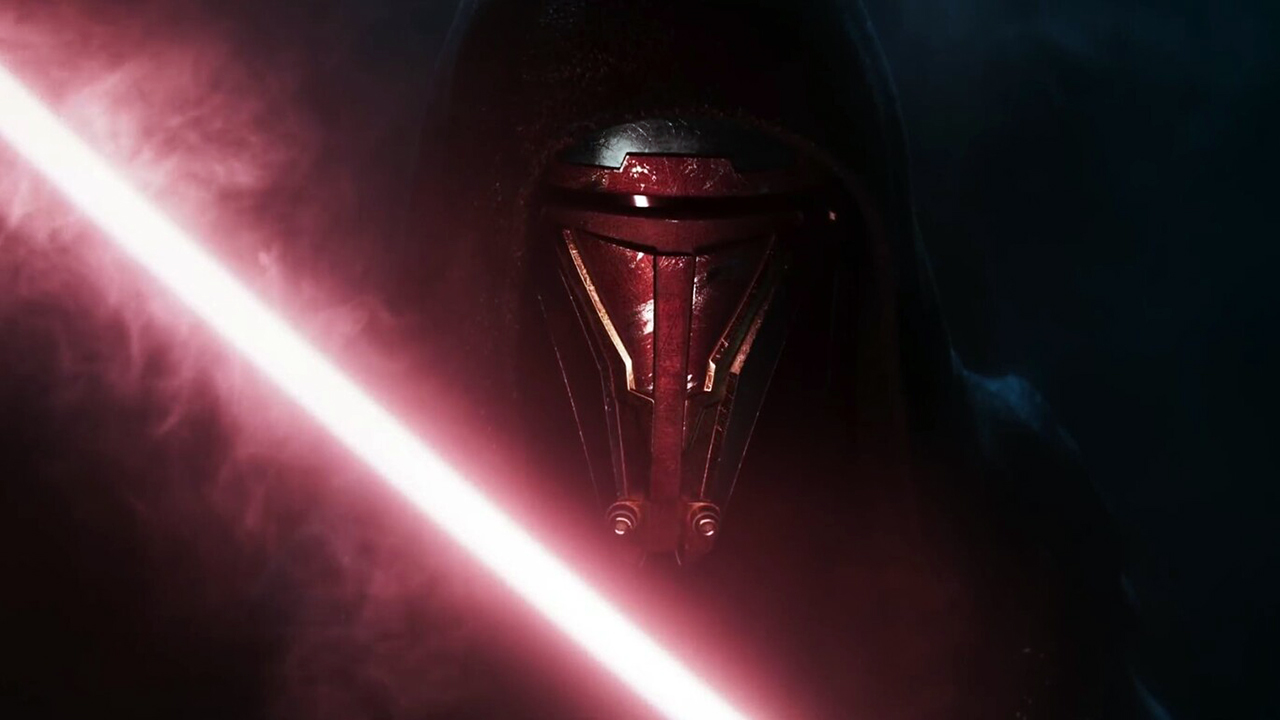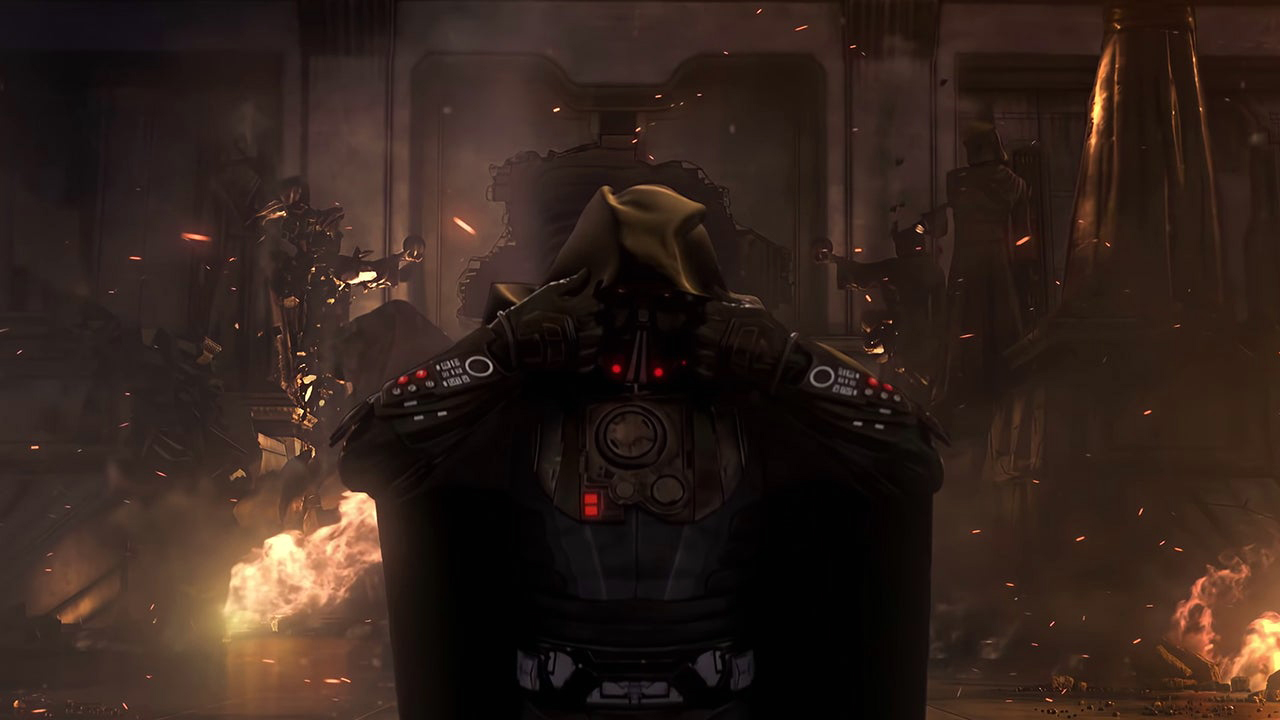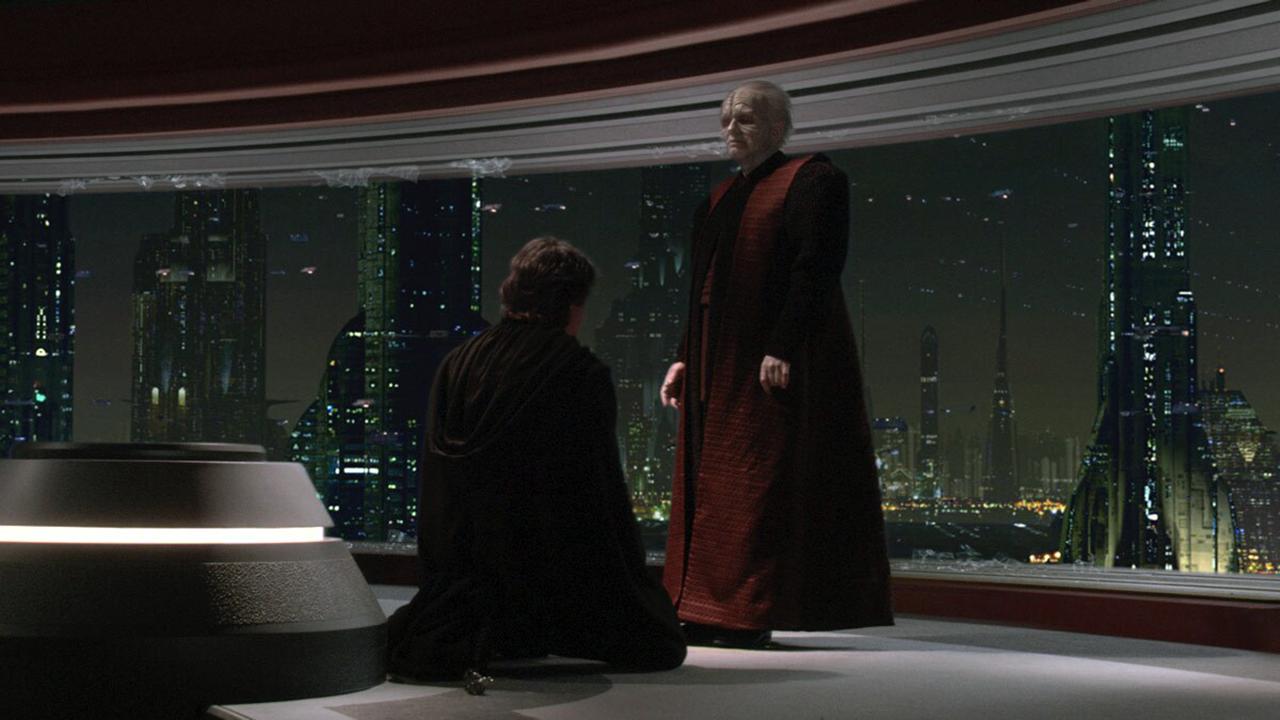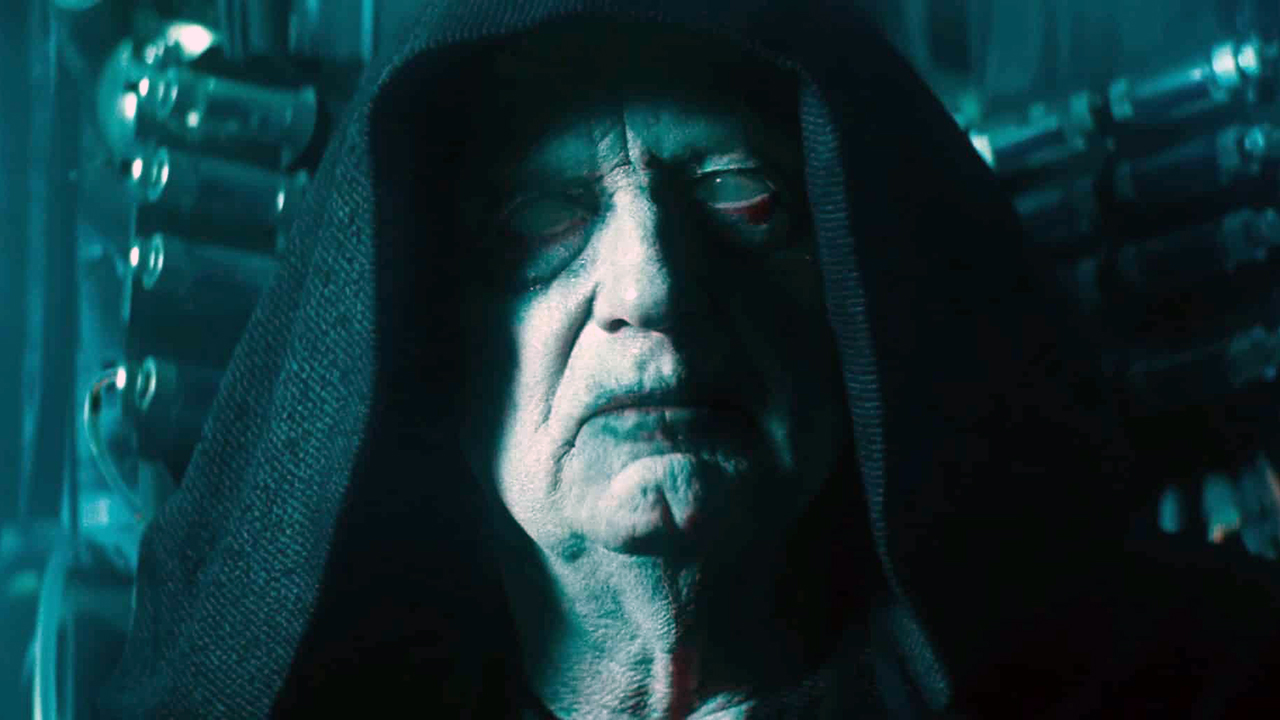The history of the Sith Order in Star Wars
A long, long, time ago in a galaxy far, far away began the ultimate battle of good and evil. Here is the full history of the Sith order.

The Sith Order has always been at the center of Star Wars' mythos as much as the Jedi, but their on-screen presence has traditionally been limited to the point of view of the good guys. Now, with the new live-action series The Acolyte on Disney Plus, this is about to change. This is our as-brief-as-possible but in-depth refresher on the history of the Sith.
Star Wars ultimately boils down to the eternal fight between the forces of light and darkness across generations. The history of both the Jedi and Sith Orders is long, troubled, and often contradictory. This is why we've decided to stick to the current Star Wars timeline canon to avoid extra confusion and better tie into the ongoing storytelling being done through movies, TV, novels, comic books, and video games.
After The Acolyte and the animated mini-series Tales of the Empire, there is plenty more Star Wars to look forward to with Skeleton Crew on Disney Plus and The Mandalorian & Grogu movie coming to cinemas. Meanwhile, Star Wars Outlaws, which arrives later this year, promises to be the Star Wars open-world video game we'd always dreamed of.
Warning: Major Star Wars spoilers ahead!
The Sith Order during Old Republic times

The Sith are old, but not nearly as old as the Jedi Order. The formation of the Sith Order happened around 5,000 BBY (Before the Battle of Yavin). The evil sect shares its name with a red-skinned alien species that has a special connection to the dark side of the Force.
The Sith Order was actually established by a Jedi during the period later known as the Hundred-Year Darkness after the first ever Sith (not the aliens) sought to learn more about the Force by tapping into the dark side. This rogue Jedi eventually amassed a following large enough to adopt an entirely new philosophy that rejected many of the Jedi Order's teachings.
The first open war between the Jedi and the Sith ended with the defeat of the latter, who fled from known space and settled on a world of red sands called Korriban (later known as Moraband). Here they rebuilt and waited for the perfect chance to strike. There, massive temples and tombs were erected with the 'help' of slaves, eventually turning the fledgling order into an empire. Unsurprisingly, this led to further wars against the Jedi for generations. During these conflicts, the Sith also constructed giant superweapons powered by huge kyber crystals that would later inspire Darth Sidious' Death Star during the reign of his Galactic Empire.

During the conflicts that happened in the Old Republic era, the Sith formed temporary alliances with the Witches of Dathomir (aka Nightsisters) as well as the plant-like species known as the Drengir. Of course, with the Sith's treacherous nature, such associations didn't last long. A remarkable win for the Sith Empire was the conquest of Coruscant, where they built a shrine that the Jedi would later 'nullify' by raising their own temple on top.
The Sith's continued resurgences over the centuries eventually pushed the Jedi to adopt more aggressive lightsaber combat forms that proved effective, but also led to a number of Jedi Knights falling to the dark side. The study of such techniques would be banned after the conflicts ended.
The Liberation of Coruscant was one of the last battles of the Jedi-Sith War and led to a definitive defeat of the Sith Order on Ruusan, a mid-Rim world, despite the Sith armada outnumbering the Jedi and their allies. The Sith's ultimate undoing was infighting over power and how to attain it. After the Jedi felled the remaining Sith, one Lord remained: Darth Bane.
As a direct answer to the fall of the Sith, Darth Bane reformed the order by establishing the Rule of Two, which mandated that only two proper Sith, a master and an apprentice, could exist at any given time. This meant that apprentices were destined to kill and replace their masters. He also initiated the Grand Plan, which would help them exact their revenge against the Jedi when they least expected it.
The Fall of the Jedi and the Revenge of the Sith

For over a thousand years, the Sith cult and Bane's successors stayed in hiding. Working in the shadows against the Jedi Order, they plotted against what was known as the High Republic, which enjoyed a golden age of relative stability and expansion.
The Rule of Two managed to save the Sith Order, and even though some Jedi came into contact with the Sith and their followers, the larger conspiracy was never uncovered. Eventually, the Sith apprentice known as Darth Sidious betrayed his master Darth Plagueis by killing him in his sleep and accelerated the plans to strike down the Jedi and take over the Galactic Republic.
In the year 32 BBY, Sidious, also known as Senator Sheev Palpatine of Naboo, was elected the new Supreme Chancellor of the Republic following the Trade Federation crisis he'd orchestrated. This led right into the Separatist Crisis, the next step in the final phase of the Sith's Grand Plan.
Meanwhile, Sidious and his second apprentice, Darth Tyranus (aka Count Dooku) took control of Jedi Master Sifo-Dyas' clone army project, recruiting the bounty hunter Jango Fett to be the template of the Grand Army of the Republic's clone soldiers. They implanted a small biochip into the brains of the clones to ensure their compliance when the time came to act on their master plan.
The year 22 BBY marked the beginning of the three-year-long Clone Wars, which split the Republic apart and raised the political temperature. Around this time, Sidious started to seduce young Jedi Knight Anakin Skywalker, who was especially powerful in the Force and fit into the Jedi Order's prophecy of the Chosen One.
The war ended with the death of Darth Tyranus, yet another pawn in Sidious' plans, and the cyborg Separatist leader General Grievous. The Sith Lord then recruited the long-troubled Jedi Knight Anakin and named him Darth Vader. At the same time, Order 66 was activated, making the clones turn on their Jedi generals. This masterful move almost completely wiped the Jedi from the face of the galaxy.
Darth Sidious’ Galactic Empire

Following the purge of the Jedi, the Republic was quickly reorganized into a Galactic Empire whose rule lasted over 20 years. Through the promise of bringing order to the galaxy, harsh military rule and aggressive expansion defined this dark age.
Darth Sidious and Vader created a limited group of dark side Force users known as the Inquisitorius, who were tasked with swiftly hunting down the remaining Jedi survivors and preventing any Force-sensitive children from becoming menaces to the Empire. The Inquisitors were former Jedi that were captured and twisted by the Sith's lies and torture methods. Vader himself trained the dark followers; the length of their hateful lives was pre-determined by their usefulness.
The fall of the Sith wouldn't happen until the Battle of Endor, which took place in the year 4 ABY in the space above the forest moon as well as on its surface. Both Darth Sidious (now known as Emperor Palpatine) and Darth Vader tried to tempt Luke Skywalker, the secret son of the latter, into joining the Sith. Once again, infighting would be the downfall of the Sith Order, as each of them had their own plans to kill and replace the other. In the end, the young Jedi Knight Skywalker – who'd been trained by Master Yoda and Obi-Wan Kenobi (Anakin's former mentor and friend) – brought Vader back to the light side. The reformed Anakin then ended Sidious' life aboard the second Death Star and saved his son, Luke, before dying from his own grave injuries.
The Final Order

Although Darth Sidious perished during the Battle of Endor and the New Republic was established after defeating most of the Imperial loyalists, those who wanted to establish a new Empire continued to cause trouble. Most of them rejected Palpatine's failed vision of the government and his unrealistic ambitions and more mystical obsessions.
Eventually, such beliefs led to the creation of the First Order in the Unknown Regions, away from the New Republic's eyes and ears. The new fascist military organization was controlled by a mysterious Supreme Leader (Snoke), who was strong in the ways of the Force, but seemingly had no ties to the Sith.
Another key alliance was established with the marauders known as Knights of Ren, who also had a particular interest in the dark side of the Force. Ben Solo, son of Han Solo and Leia Skywalker Organa, eventually fell to the dark side under Snoke's influence. Ben rose to lead the Knights of Ren as Kylo Ren, trying to end the Jedi and succeed where his grandfather Anakin/Darth Vader had failed.
Unbeknownst to everyone but his closest cult of followers, the Sith Eternal, the fallen Sith Lord Darth Sidious was able to cheat death and was now on Exegol, a secret Sith world hidden inside the Unknown Regions. After a number of failed experiments, the cult managed to create a cloned body of Sheev Palpatine able to contain Sidious' spirit. The result was imperfect, however, so the body was decayed and had to be connected to a number of cybernetic components and machines just to stay alive.

The Sith Eternal was also behind the creation of the artificial humanoid aliens known as strandcast, the most famous of which was Snoke. This means Sidious' secret cabal was the real guiding hand behind the First Order's actions against the New Republic. Ultimately, they were only buying time to finish the Final Order's planet-destroying Sith fleet and launch a savage strike against the entire galaxy to firmly establish a new, more traditional Sith Empire.
The plan was launched in the year 35 ABY, after the First Order had decimated most of the Republic's defense forces. Sidious revealed himself to Kylo Ren, now the Supreme Leader of the First Order, and merged the faux organization into the Sith Eternal's fleet.
With these events also came the reveal that Rey, who'd been trained by Luke and Leia Skywalker in the ways of the Force, was actually Sidious's granddaughter – the strandcast known as Dathan had escaped Exegol and eventually had a daughter in the year 15 ABY with a woman named Miramir. While the couple were killed by the assassin Ochi of Bestoon (sent by Sidious), Rey was saved by being left behind on Jakku.
Upon learning of his 'granddaughter,' Sidious' plans quickly pivoted to either taking her out of the equation or making her an Empress. When Rey made it to Exegol and rejected his offer, as well as bringing Kylo Ren/Ben Solo back into the light, Sidious attempted to destroy both her and the last of the Skywalker bloodline. However, Sidious ended up being disintegrated by his own power, reflected back at him by Rey and the spirits of the past Jedi.
Although the last Skywalker sacrificed himself to save Rey from certain death, the surname survived as Rey adopted it as her own. With that, the Sith, as well as the Final Order (defeated by a civilian uprising that happened across the entire galaxy), were seemingly erased forever.
Join our Space Forums to keep talking space on the latest missions, night sky and more! And if you have a news tip, correction or comment, let us know at: community@space.com.
Get the Space.com Newsletter
Breaking space news, the latest updates on rocket launches, skywatching events and more!
Fran Ruiz is our resident Star Wars guy. His hunger for movies and TV series is only matched by his love for video games. He got a BA of English Studies, focusing on English Literature, from the University of Malaga, in Spain, as well as a Master's Degree in English Studies, Multilingual and Intercultural Communication. On top of writing features and other longform articles for Space.com since 2021, he is a frequent collaborator of VG247 and other gaming sites. He also serves as associate editor over at Star Wars News Net and its sister site, Movie News Net.











